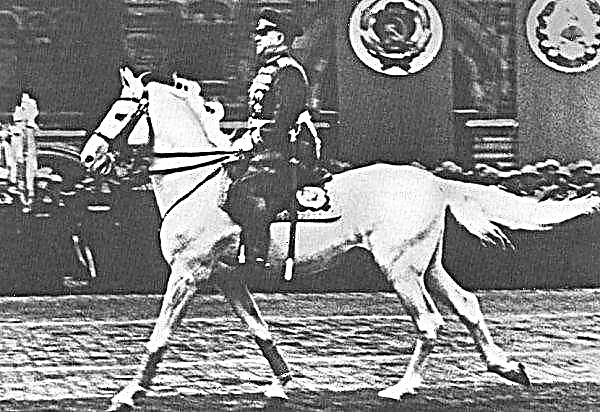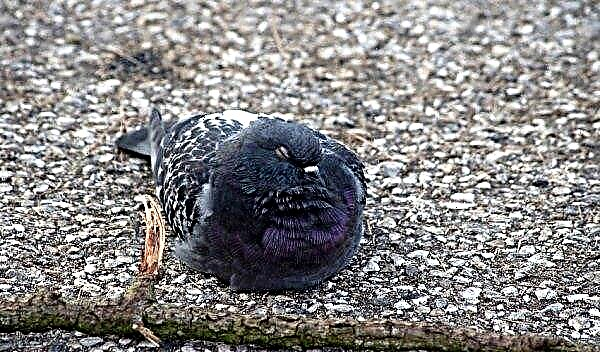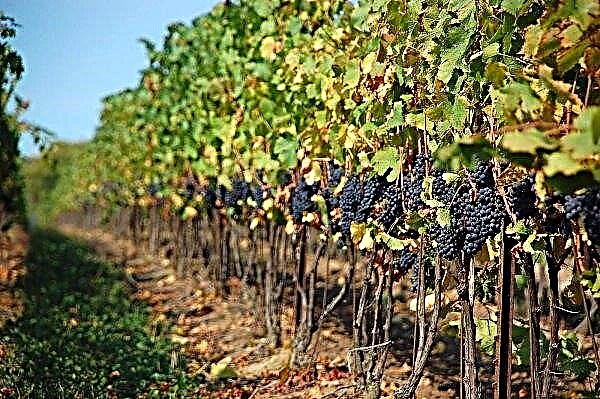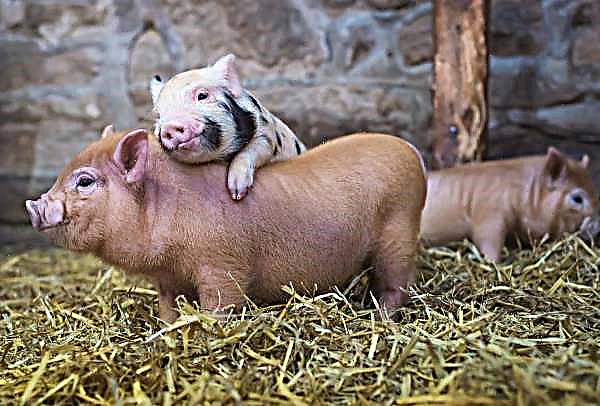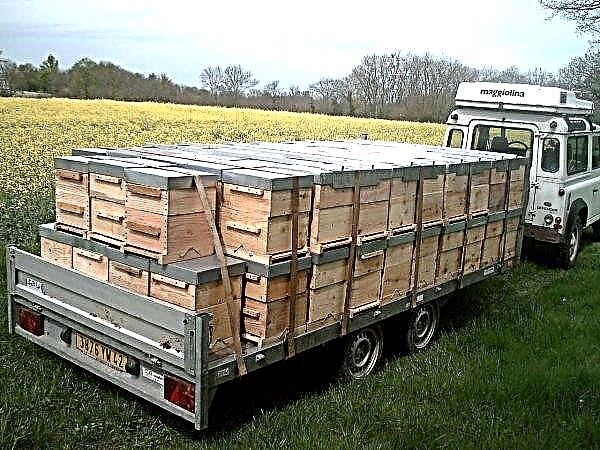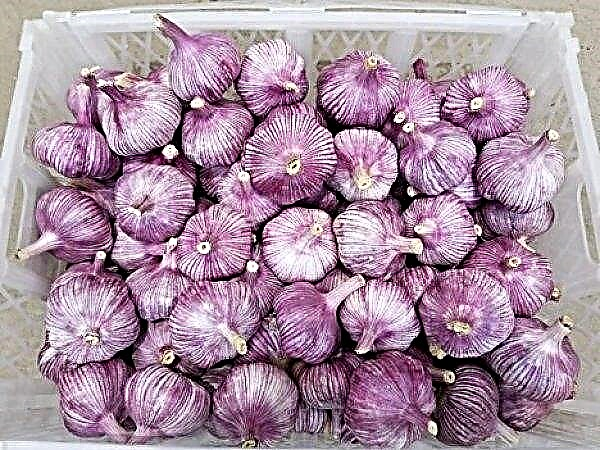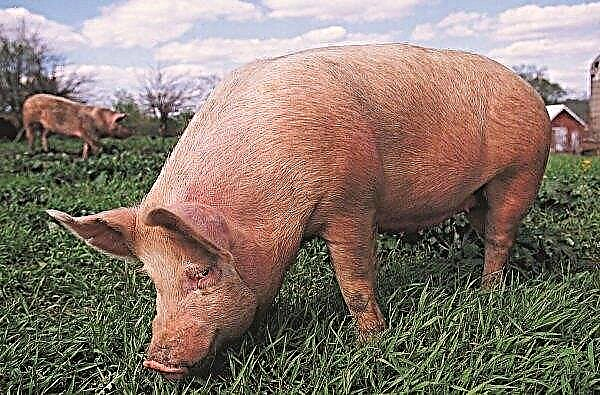Growing cattle provides for its provision with all necessary conditions for normal growth and development. One of the indispensable factors for the well-being of animals is their complete feeding. Animals of different ages need an individual approach to the issue of their nutrition, calves up to three months of age are considered especially sensitive to food balance.
What is calf feed
Compound feed, which is used to feed young cattle, is a balanced nutrient mixture, which includes foods high in protein, carbohydrates, vitamins and minerals.
Important! In no case can cow colostrum and milk be replaced by combined feeds - this leads to delayed calves in development, slow weight gain and low milk productivity in adulthood.
Her moderate feeding, starting from the second week of the calf’s life, can stimulate the growth of scar villi and start the process of feed fermentation. High nutritional value of feed increases the stress resistance of animals in the first weeks of their life and strengthens their own immunity.
What is included in the feed
Products included in the feed for young cattle vary depending on the form of release and purpose of the feed, but on average they are represented by such units:
- grain group - corn, wheat, oats, barley;
- protein group - beans and legumes;
- rough ingredients - hay, straw mass;
- ingredients of animal origin - fish and meat and bone meal, milk powder;
- vitamin and mineral supplement.
Also, the composition of feed for calves may include wheat, rye, barley bran, salt, milk powder, beer stillage, silage, molasses. A prerequisite for a properly formulated feed is a high carbohydrate content and a low percentage (up to 20%) of protein.
Advantages and disadvantages of using feed
Like any other type of feed for cattle, compound feed has its advantages and disadvantages of use.
- The advantages of this type of nutrition are much greater than the disadvantages:
- It has a balanced composition - it includes all useful substances, including vitamins and minerals necessary for the normal growth of young animals.
- With a minimum consumption of feed mass, the animal provides maximum benefit, therefore, it is considered economically viable.
- Attractive palatability of the compound feed allows young animals to feed those nutrients that the animal refuses to consume in its original form. The same characteristic allows you to reduce feed loss during its distribution.
- Easy to dose due to granular or briquetted structure.
- It is highly digestible - nutrients benefit calves rather than transit.
- It increases the immunity of young animals, and at the same time their resistance to infectious diseases and stresses.
- It is safe from a hygienic point of view - it does not contaminate the feeders, does not contribute to the development of third-party microflora, and is easier to clean.
- Easy to transport, retains its useful properties for a long period of time even in adverse storage conditions (high humidity, sudden changes in temperature).
- The disadvantages of this type of feed is much less:
- Relatively high purchase cost.
- The difficulty of achieving optimal proportions with self-preparation of mixtures.
- The occurrence of digestive disorders in calves with the untimely introduction of animal feed into the diet.

Varieties of feed
A balanced combination feed has several forms of release, it is also divided according to its functional purpose. It is important to feed the calves intended for them to different age groups of calves.
Did you know? The most expensive beef in the world is the meat of Japanese cows of the Vagyu breed - the cost of one kilogram of fillet is about five hundred dollars. Especially valuable pieces of tenderloin at the same time cost a thousand dollars for one steak. Cattle Vagyu kept in special conditions - they are fed with the best soft herbs, they are drunk with live beer and massages are done to better build muscle mass.
According to the form of release
The structure of the feed is one of the main parameters according to which it is classified. Depending on the form of release, the following types of feed are distinguished.
Loose
This mixture is crushed to a conditionally uniform state, which includes components typical of the diet of young cattle. The composition of bulk feed may include legumes, oilcake, meat and bone meal, straw, hay, cereals, molasses, vitamin and mineral supplements. The amount of these components is calculated based on specially formulated diets, the qualitative structure of which depends on the age, target and gender of the livestock.
The amount of these components is calculated based on specially formulated diets, the qualitative structure of which depends on the age, target and gender of the livestock.
Bulk feed, in turn, is divided into masses of coarse, fine and medium grinding. It is considered the most cost-effective, since the technology for its preparation is very simple.
It should be noted that if the cost of bulk feed exceeds the cost of briquettes or pellets, then the quality of the latter is not high enough and it is not recommended to use it for feeding young animals.
Granulated feed
It is made from loose by pressing into cylindrical granules of the same size. Depending on the age group for which the food is intended, the granule size can vary from 0.4 to 2 cm.
- This species has a large number of advantages over loose:
- It is easily transported and is subject to long storage;
- it can be distributed by an automatic feeder;
- maintains uniformity and uniform distribution of all ingredients, while loose in due course is sorted into fractions of various weights;
- has a lower percentage of losses - practically does not get enough sleep from the feeders;
- it is easily acquired by young growth;
- due to heat and mechanical treatment, it is cleared of foreign bodies and extraneous microflora, which can harm animals.
Important! The use of animal feed and vitamin-mineral supplements can increase livestock weight gains by 20–25% Therefore, the slaughter condition in cattle does not occur at 16 months, as when fattening with natural feed, but at one year old.
Briquetted
This subspecies of feed is much larger than the pellets, and is pressed into rectangular slabs. Approximately 50% of this feed is made up of coarse components - hay, straw, the other half is represented by grain ingredients, animal products.
Molasses is also used, which holds together the components of the briquettes. Before feeding livestock briquettes need to be crushed, and in some cases soaked, but at the same time they are stored and transported better than other forms.
Compound feed for the intended purpose
Depending on the intended purpose, several groups of feed for cattle are distinguished. Some of them are complete feeds for daily consumption, others are used as additives that increase the nutritional value of the main feed.
Complete (PC)
This is a complete feed mixture with a complex composition, providing the animal with all the necessary nutrients. The basis of this mixture is cereal products that provide high energy value of the feed with a small specific gravity.
Pre-starter feeds are considered to be full-feed, allowing to increase the size of the rumen and create favorable conditions for the development of microflora of the stomach of young animals.
This category also includes starter feeds, growers and finishers, which are used depending on the period of growing the animal. The main disadvantage of this type of mixtures is their high cost - the financial benefit of feeding livestock on full-feed feeds will be visible only when purchasing them in bulk.
Concentrated (K)
As an additive to the main diet, concentrated mixtures are composed of grain components and are saturated with vitamin and mineral supplements. Concentrates are introduced into the diet to strengthen the calves' immunity, accelerate their growth and are divided into high-protein and carbohydrate, depending on the composition.
Protein feeds are based on legumes and herbs, bean meal and oilseed meal. Carbohydrates, on the contrary, consist of grain components - corn, wheat products, and barley.
Despite the balanced composition, the use of concentrates as the sole source of nutrition is not allowed. Animals that have an excess of concentrates in their diet gain an unhealthy weight gain and gastrointestinal upset, so they should be mixed with roughage, silage. In addition, concentrates are recommended to be preliminarily prepared by soaking them in warm water for swelling, and only then given to calves, since their scar is not yet adapted for digesting coarse fiber.
In addition, concentrates are recommended to be preliminarily prepared by soaking them in warm water for swelling, and only then given to calves, since their scar is not yet adapted for digesting coarse fiber.
Did you know? The largest cow in the world nicknamed Nickers lives on an Australian farm - as of 2018, the weight of the animal was 1.5 tons, and the height - almost 2 meters. Owner Nickers decided not to give the majestic animal to the slaughterhouse, so now an audience from all over Australia is taking a look at the record-breaking cow.
Feed mixtures
They represent a complete healthy diet for young cattle, which can be obtained even by mixing concentrates with a rough base. According to the standards, the composition of such mixtures includes various concentrates, fiber, molasses, and yeast.
Such food is considered complete and does not require any additional inclusion in the diet, except for boiled root crops.
Large livestock complexes usually prepare their own mixes, taking into account the individual needs of each herd.
The composition of the mixture must be balanced for all the necessary animal substances, and for this it is necessary to compile specialized walkie-talkie tables, so it is recommended that novice cattle breeders buy finished products from large feed producers.
Additives (BVD)
Protein-vitamin supplements are used to enrich the calf’s diet with the nutrients necessary for their rapid growth. Of the total weight of the diet, such additives usually comprise a quarter or a fifth, depending on the needs of the animal. It is forbidden to feed young animals up to three months to BVD.
Premixes (P)
There are both simple and complex premixes. Simple include mineral, vitamin, and mixed supplements. Complex, in turn, can be used to enrich the feed with enzymes, pro- and prebiotics, sorbents and even flavorings to increase the nutritional attractiveness of the feed.
Typically, premixes include an absorbent base, such as herbal flour, yeast, oilcake, and a dietary supplement, which determines the purpose of the premix.
Due to the activity of premixes, their mass fraction in the diet should not exceed 1% of the total mass of feed. Their negative qualities are due to the complexity of dosing relative to the needs of young animals. Calves up to 6 months old are recommended to give premixes in an amount of 50% of the norm of adult animals.
How to make homemade feed for calves with your own hands
Given the relatively high cost of ready-made feed, many private farmers prefer to cook the feed themselves. There are certain recipes according to which you can collect a mixture suitable for feeding calves:
There are certain recipes according to which you can collect a mixture suitable for feeding calves:
- oats - 40%;
- barley - 30%;
- wheat - 5%;
- peas or soybeans - 5%;
- sunflower meal - 16–18%;
- fodder yeast - 1%;
- chalk - 1%;
- table salt - 0.5%;
- premix "PKR1" - 0.5%.
Important! Unlike other farm animals, cattle are unpretentious to the conditions of keeping, but the quality and balance of the feed have a great influence on them.
Those owners who do not have the time or ability to prepare complex mixtures and calculate the percentage of their components can use a simpler recipe:
- corn - 35%;
- oats, wheat, barley in equal proportions - 35%;
- bean meal - 25%;
- vitamin and mineral supplements - 5%.
Since the stomachs of calves at a month old and earlier are not yet formed, the feed must be pre-processed - for this purpose, a household crusher of 20–25 kg is used. If the farmer plans to produce independently meal, and hay, and feed pellets, then he will have to purchase a granulator, dryer and oil press.
From the point of view of economic benefits, it is recommended to purchase it in a pool of 3-4 farms.
From what age and how to give compound feed to calves
During the first week, young animals should eat exclusively colostrum and milk. Starting from the eighth day of life, a pre-starter is introduced into the diet, which is soaked to a mushy state - both granules and loose form.
If the owner cannot afford to keep the calves on the starter and starter, then as an additive, oat jelly is used, which is prepared from flattened oats (the so-called "Hercules"). The first servings should be within 0.2 kg / day, then the volumes should be gradually increased to 2.5 kg / day by the sixth week of life.
After reaching a young age of one month, he begins to be fed soft hay, dry concentrates, boiled root crops. Up to 3 months of life, feeding of heifers and gobies is the same.
Then they are divided into two herds and fattened, either taking into account the stimulation of milk productivity, or for weight gain - here concentrates, full-time mixtures of the type Grover (for fattening animals) begin to be used.
Feeding of young cattle should be carried out in accordance with established nutritional standards. At an early age, animals should receive an exceptionally balanced diet to meet the needs for nutrients, vitamins and minerals.

